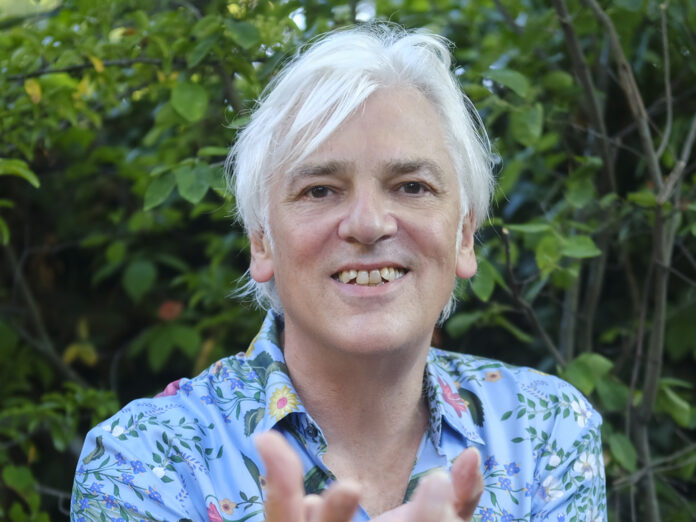Robyn Hitchcock’s first book, a memoir titled 1967: How I Got There and Why I Never Left, is out now. In Uncut’s July issue, he spoke about the book and his memories of that pivotal year in his youth – from the strange customs of Winchester College to the mind-blowing new music he was hearing – and here Hitchcock exclusively takes us through a playlist of some of his favourite tracks from '67.
Robyn Hitchcock’s first book, a memoir titled 1967: How I Got There and Why I Never Left, is out now. In Uncut’s July issue, he spoke about the book and his memories of that pivotal year in his youth – from the strange customs of Winchester College to the mind-blowing new music he was hearing – and here Hitchcock exclusively takes us through a playlist of some of his favourite tracks from ’67.
Comprising 10 songs by British artists and another nine by Americans, the list has been curated by the singer-songwriter to best encapsulate the feel of that psychedelic period. He’s also kept away from the songs he covers on his accompanying album, 1967 – Vacations In The Past.
Take a listen here, and scroll down to read Robyn’s commentary…
THE NEW UNCUT COMES WITH A FREE, ULTRA-COLLECTABLE JOHN LENNON CD – ORDER A COPY HERE
ROBYN HITCHCOCK: These are not necessarily the best songs by those artists. Like “Hole In My Shoe” isn’t my favourite Traffic song from that period – I’d rather listen to “Mr Fantasy” or “Heaven Is In Your Mind”, and I cover “No Face, No Name, No Number” on my [1967] record – but “Hole In My Shoe”, with the sitar and those high harmonies at the end, is the most 1967 track, you know? And “Flying” by The Beatles, I’ve always felt that really encapsulated Magical Mystery Tour more than any of the other songs on it. Again, it’s not one of their better-known pieces. It’s a four-way co-write too!
It was kind of obvious that Satanic Majesties was a response to, or slight rip-off of, Sgt Pepper. But the atmosphere of the music was so different. And I’m one of those Stones fans who actually really likes Satanic Majesties. I don’t know if Keith Richards disowned it or not, but I think they get the dark side of psychedelia. It’s still got that Stones pulse, but they are probably quite cynically just going, ‘Okay, psychedelia is what’s happening this year… come on, folks, let’s get the kaftans out… oh, we can use Brian on this, wake up Brian! Come on. Put that down, you can have it after the session…’ I do think “She’s A Rainbow” is a really beautiful piece, and that’s largely down to Nicky Hopkins playing the piano. There’s a point when Charlie Watts and everybody comes in at the end, and you’ve got that Stones thrash underneath, and you’ve got Jagger being sort of Prince Michael on the occasions he gets fey.
I think the Stones did their best stuff when Brian Jones was still in the band, before Keith became dominant. I think they did actually write some pretty good songs, but there’s just something about them that they didn’t get taken as seriously as Ray Davies and The Beatles. There’s some pretty good stuff on things like Aftermath and Between The Buttons.
Talking of The Kinks, Ray Davies has got that fabulous ambivalent smile, sort of crinkled… there’s an awful lot of doubt in him, but he also had written these appallingly catchy songs and he still was quite a showman. These days he’s one of those guys that will play his old songs just as they were, like McCartney does, like Donovan does, he doesn’t do a Dylan on them. You get “Dead End Street” and “Autumn Almanac” and “Waterloo Sunset” as they were, and that’s just beautiful.
It was hard to know what to pick from Forever Changes, but “The Red Telephone” is pretty creepy. Extraordinary chords as well. I play it from time to time, and I have to relearn them all every time. I don’t know how Arthur Lee came up with that. It’s quite amazing. He was an influence on Syd Barrett as well – Barrett was a big Arthur Lee fan.
Most people in the UK hadn’t heard The Velvet Underground in 1967, although probably Brian Eno had, seeing as he was doing that thing with the electric violin in the basement [a story told in Hitchcock’s book]… that makes me think that he had got a copy [of The Velvet Underground & Nico] from somewhere, and he was thinking of John Cale. We had kids at school from the States, and it was an American kid who brought in that first copy of Highway 61… that I heard, it was an American one with a red label. Somebody else had a copy of the first Byrds album, which I bought from them. I’ve still got it! And there were people who had the first Velvet Underground album, so I heard it – actually just over the border into 1968. The Velvet Underground is now seen as kind of what came after hippies. All the other songs on my playlist are sort of hippie music, and I deliberately put The Velvet Underground at the end to go, ‘And here’s the next chapter folks, this is where it gets really dark…’



